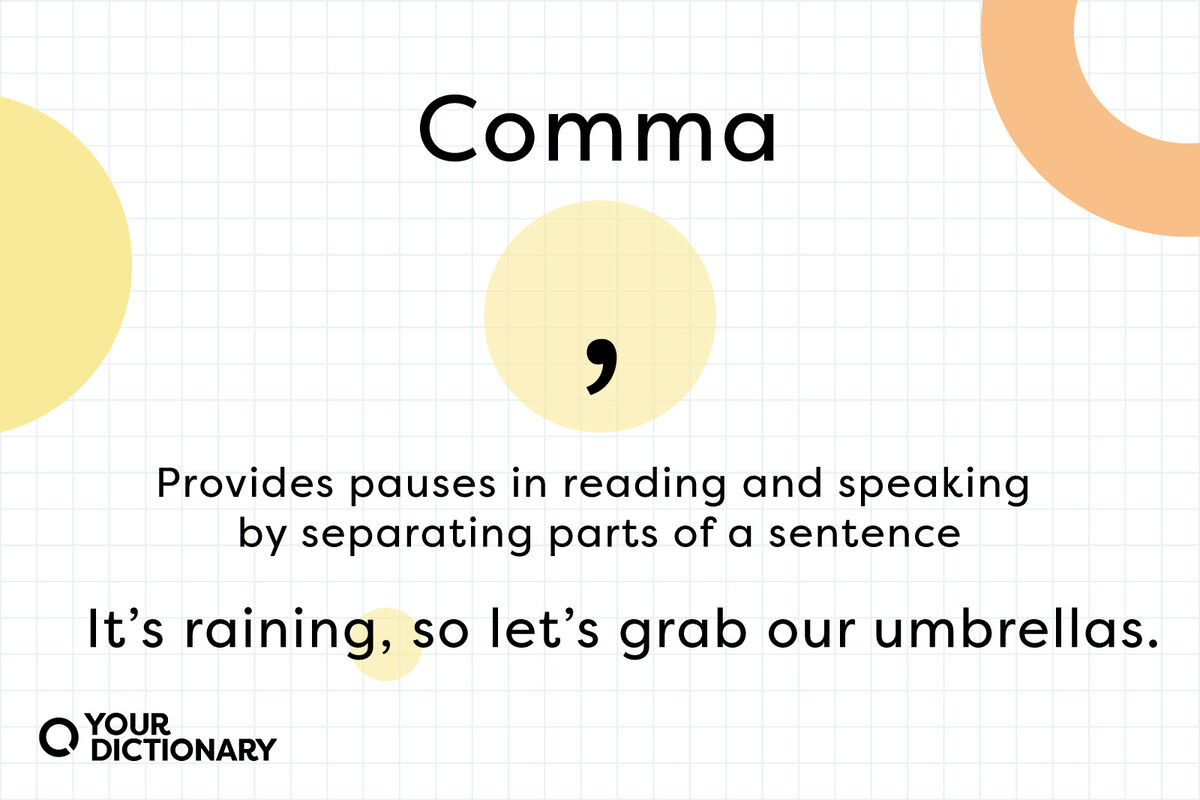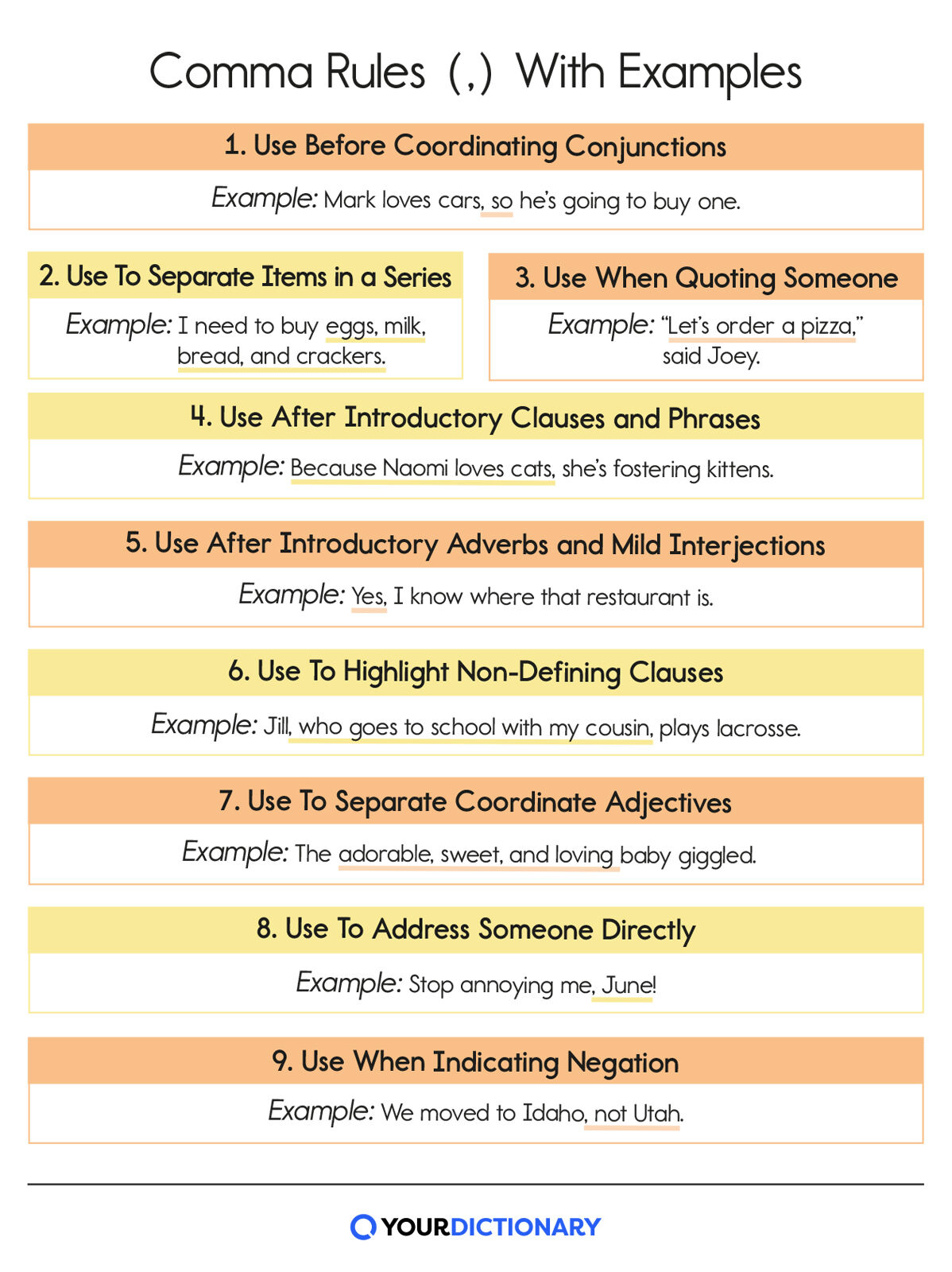

A comma (pronounced “cah-muh”) is a punctuation mark that provides pauses in reading and speaking by separating parts of a sentence.
You’ll find examples of commas in all sorts of sentences below.
Commas provide a nice pause in a sentence, but you can’t just throw a comma wherever you want.
Understanding comma rules can help you figure out when and how to use commas properly.

When you're writing a simple sentence, you're using only one independent clause, which can stand alone as a complete sentence. These sentences don't require commas.
However, when you add another independent clause, separate them with a comma and a conjunction instead of a period.
That means that you will use a comma before the word but if it is the start of an indepenent clause (or a sentence that could stand on its own).
Each of these clauses has the same level of importance, and both are essential to the sentence. Without a comma, your sentence is a run-on.
AdvertisementWhen you’re writing a list of nouns, verbs, or any other part of speech, you’ll need to include commas to separate them. The same goes for a list of phrases and clauses.
The final comma (before the and) in these series is known as the Oxford or serial comma. Many people consider it correct to include the Oxford comma between the final two items in a list.
The choice depends on personal preference and your style guide. However, you should always use an Oxford comma if it prevents confusion.
Use a comma when you’re quoting someone or when a character is speaking in dialogue.
When the quote comes first in the sentence, put the comma inside the quotation marks.
Put the comma after the attribution when the quote comes second in the sentence. You also add a comma to both places when the attribution is in the middle of the quote.
Note that this rule primarily applies to American English. In British writing conventions, commas (and periods) go outside the quotation marks.
AdvertisementIntroductory clauses and phrases are groups of words that come before an independent clause in a sentence.
When you start a sentence with a dependent clause, you follow it with a comma (just like that sentence!).
If you add these phrases to the end of the sentence, they don’t require commas.
For example, “The dog barked at me to scare me away” doesn’t need a comma to separate the infinitive phrase from the rest of the sentence.
AdvertisementYou also need to add a comma after a conjunctive adverb, such as anyway, nevertheless, or however.
Commas also follow yes and no in the same context.
Examples of sentences with introductory conjunctive adverbs include:
Finally, if you’re starting a sentence with a mild interjection, you need to include a comma. (For stronger interjections, use an exclamation point.)
Unless you’re starting a sentence with an independent clause, it’s safe to assume that you need a comma. Otherwise, it’s difficult to know when your introductory clause or phrase ends and the rest of your sentence begins.
AdvertisementNon-defining clauses add more details about a noun in a sentence, but they’re not essential. The sentence still makes sense when you remove them.
Use commas to separate non-defining relative clauses from the rest of your sentence.
You also need to add commas around appositive phrases, which function like relative clauses but don’t include relative pronouns.
If you’re using a person’s name as an appositive (such as in “My cousin’s friend Jill plays lacrosse”), you don’t always need to add commas.
However, adding commas around non-defining clauses is a good way to clarify your meaning (“My cousin’s friend, Jill, plays lacrosse”). It’s a style choice.
AdvertisementWhen two adjectives describe the same noun, they’re known as coordinate adjectives. You should separate these adjectives using a comma.
When adjectives describe different attributes of a noun, they’re known as cumulative adjectives and don’t need commas.
For example, “Maya slept on a soft pink throw pillow” doesn’t require commas because each adjective describes a different part of the bed.
When you’re talking to someone in person, it’s obvious that you’re talking to them.
But in writing, you need to directly address them — and you do so with a comma.
Separating a name out with a comma shows the reader that you’re speaking directly to that person.